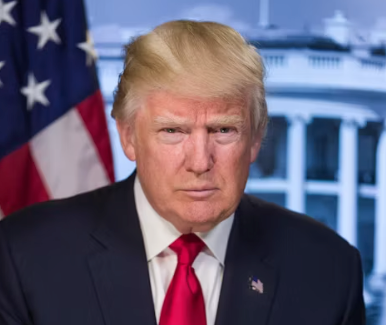$SPY $DIA #TrumpTariffs #Economy #InflationControl #TradeWar #EconomicGrowth #RecessionProof #TariffRevenue #FinancialMarkets #USPolicy #EconomicData
How Did Trump’s Tariff Strategy Prove the Skeptics Wrong? Uncover the Unexpected Benefits!
In the news, the Trump administration’s tariff strategy has consistently surprised many economic pundits. Skeptics had anticipated a downturn, yet the actual outcomes tell a strikingly different story. Contrary to popular belief, there’s been no sign of an impending recession, inflation has remained stable, and tariff revenues have impressively increased.
Understanding the Impact of Tariffs on the U.S. Economy
The introduction of tariffs was initially met with widespread criticism and fear of negative repercussions on the U.S. economy. However, the data reveals a resilience that has defied these expectations. Instead of the predicted economic contraction, the tariffs have contributed to a robust fiscal landscape. This begs the question: how have these policies managed to keep inflation in check while simultaneously boosting tariff revenue?
One possible explanation lies in the strategic application of tariffs, which seems to have stimulated domestic production and, consequently, reduced the dependency on imported goods. This shift not only supports local businesses but also retains capital within the country, thereby enhancing the overall economic health.
Exploring the Benefits Beyond Economic Metrics
Beyond the direct financial gains from tariffs, there are additional layers of benefits that have surfaced. For instance, the increased revenue from tariffs has provided the government with additional resources that can be redirected towards infrastructure projects, educational programs, and other public services. Furthermore, this fiscal strategy has spurred discussions and negotiations aimed at achieving fairer trade agreements with international partners.
The Long-Term Outlook: Sustainability of Tariff-Driven Growth
While the immediate effects of the tariff policies appear favorable, it raises inquiries about the long-term sustainability of this approach. Can the U.S. continue to rely on tariffs as a stable source of revenue without disrupting global trade relationships? The ongoing negotiations and adjustments in trade policies will be critical in maintaining a balance between protecting domestic interests and fostering international cooperation.
For a deeper dive into how these economic policies are shaping the stock market, consider exploring further information on our dedicated stocks analysis page here.
Conclusion: Reassessing the Economic Landscape Post-Tariffs
As we move forward, it remains essential to closely monitor the economic indicators and market responses to these tariff policies. The initial success suggests a potential model for balancing national economic interests with global trade dynamics. However, the true test will be the adaptability and responsiveness of these policies to the ever-evolving economic challenges and opportunities.
In conclusion, while words can indeed convey messages, the data surrounding Trump’s tariffs undeniably presents a compelling narrative of unexpected economic resilience and strategic foresight. As the situation unfolds, it will be intriguing to see how this playbook continues to influence both the U.S. economy and global trade practices.











Comments are closed.